February 11, 2016
Where were you when the coins began to mix … on the 14th of February 1966?
It’s been 50 years since “treys” and “zacs”, “deeners”, “two bobs” and “quids” disappeared more or less from Australian lingo.
Q. What did the giraffe sing after he swallowed a shilling?
A. It’s a “Long Way To Pass-A-Deener”
(That was a popular “Dad” joke).
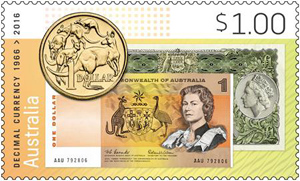
Sunday marks the anniversary and you can bet London to a “brick” (ie 10 pounds) that the familiar Click Go The Shears changeover tune will be played on most TV channels and radio stations at some stage during the day.
Australia Post is also marking the anniversary with the release of a new $1.00 stamp which features a Pound note, the original $1 note and a $1 coin.
Australia Post philatelic manager Michael Zsolt reminds us of how big a day it really was …
“Not only did the general public have to be educated on the changes, but retailers and bank staff had to be trained to make conversions, update their signage and help customers,” he said.
Sydney-based designer Gordon Andrews created the boldly coloured banknotes that depicted a diverse and inclusive Australia – a vast improvement on the drab pre-decimal notes.
“The bank notes were ground-breaking for a number of reasons. First, they featured Aboriginal culture, architecture, the arts, science, industry and native fauna. Secondly, the $5 note featured a woman other than the Queen for the first time ever, Caroline Chisholm,” Mr Zsolt said.
Gold and silversmith Stuart Devlin designed the new coins, sculpting depictions of Australian fauna on the 1c, 2c, 5c, 10c, and 20c coins, and the Australian Coat of Arms on the 50c coin.
* * *
* * *
How Much Do You Know About Australian Currency?
Here’s a quick quiz, courtesy of the Australian Mint:
Q. What is Australia’s rarest coin?
The 1930 penny. Only six proof versions of the 1930 penny are known to exist: three in private hands, one in the Museum of Victoria, the National Gallery of South Australia and the British Museum. In 1998, a privately owned 1930 penny was sold for $225,000.
Q. When was the name “dollar” first approved?
The preferred name was approved in 1963, three years before changeover. Other names considered by the government at the time were “Royal”, “Merino” and “Austral”.
Q. What coins and note denominations were in use at the time of Federation?
A. At the time of Federation, Australia used British coins. The first Australian coins were produced in 1910 (silver) and 1911 (bronze).
In 1901 the following denominations were considered legal tender:
- Coins – Farthing (quarter penny), Halfpenny, Penny (used for ‘two up’), Threepence, Sixpence, Shilling, Florin (two shillings), Half Crown, Crown (five shillings), Half Sovereign (half a pound), Sovereign (one pound)
- Notes – 10 shillings, 1 pound, 5 pounds, 10 pounds
Q. What are the lyrics to the Decimal Change Over Song? (written by Ted Roberts)
In come the dollars and in come the cents
To replace the pounds and the shillings and the pence
Be prepared for change when the coins begin to mix
On the fourteenth of February 1966.
Chorus:
Clink go the coins, clink, clink, clink
Change over day is closer than you think
Learn the value of the coins and the way that they appear
And things will be much smoother when the decimal point is here.
In come the dollars and in come the cents
To replace the pounds and the shillings and the pence
Be prepared folks when the coins begin to mix
On the fourteenth of February 1966.
Q. When was the $1 coin first released?
A. 1984
Q. When was the $2 coin first released?
A. 1988
Q. When were 1c and 2c coins taken out of circulation?
A. The last one cent coins were dated 1990 and the last two cent coins were dated 1989. They were progressively removed from circulation starting in 1992.
Q. Are 1c and 2c coins still legal tender?
A. Yes, 1c and 2c pieces are still Australian legal tender but they are not considered as “currency” (or, money that is officially released for circulation). This means that you can take your old 1c and 2c coins to the bank and exchange them for currency totalling the same face value.
Q. Are all coins produced by the Mint legal tender?
A. Yes, all coins (including collector coins) currently produced by the Mint are Australian legal tender. Collector coins may be used to purchase goods and services to the value stated on the coin (or “face value”), or can be exchanged at a bank for regular circulating currency to the same face value.
Q. Are the “Holey Dollar” and “Dump” coins and other pre-decimal coins still legal tender?
A. The Holey Dollar and Dump (which circulated in colonial times) are the only Australian coins which have had their “legal tender” status removed or been “demonetised”. Some coins which are no longer in circulation, such as Australia’s pre-decimal coins and the 1 and 2 cent coin are still “legal tender”.
Q. Is there a limit on the number of coins I can hand over to the shopkeeper in a store?
A. Yes. The Currency Act stipulates the maximums:
- 1c & 2c – maximum of 20 cents
- 5c, 10c, 20c & 50c – maximum of $5
- $1, $2, $5 & $10 – not exceeding 10 times the face value, inclusive ie a maximum of $100 for $10 notes (10 x $10)
- Any other denomination – to any value
Q. How many different portraits of the Queen have appeared on Australian coins?
A. Since The Queen’s coronation in 1953, five effigies of Queen Elizabeth II have appeared on Australian coin obverses. Previous effigies were designed by Mary Gillick (1953), Arnold Machin (1966), Raphael Maklouf (1985), and the current effigy by Ian Rank-Broadley (1998). During 2000, Royal Australian Mint designer Vladimir Gottwald’s effigy was used on the 50c Royal Visit coin only.













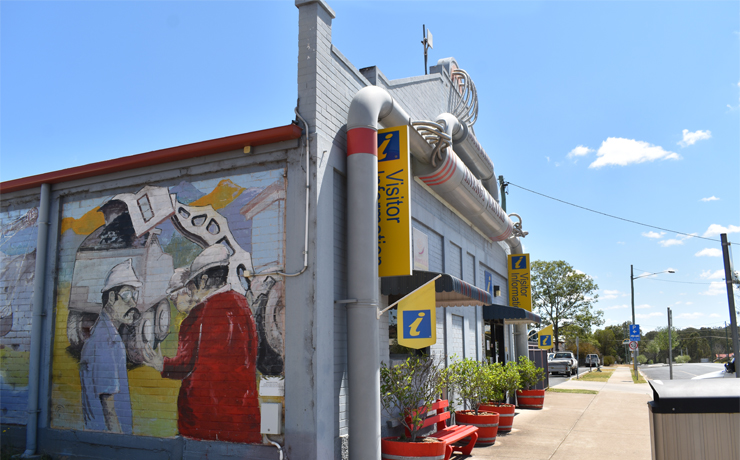






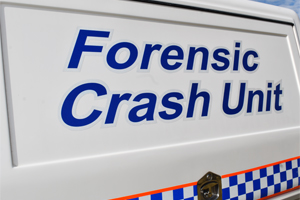
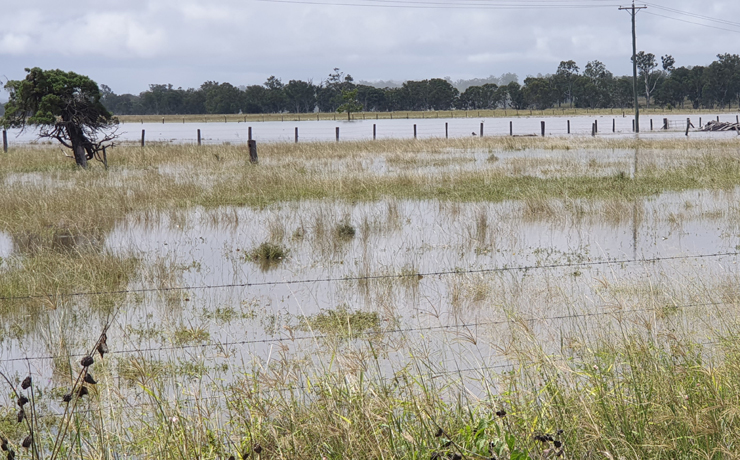
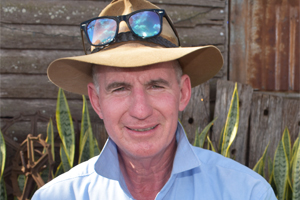

I was almost 19 years of age and working as a ledger supervisor at The National Bank of Australasia Ltd in one of the three Toowoomba branches which were all located in the main street. In our department there was myself and two young ladies who operated the ledger machines. This was prior to computerisation. At that time there were several smaller branches with manually maintained ledgers.
The branch closed for two days and I recall that we had to be dressed businesslike as several of the large cash customers still deposited their banking during this time. Staff of some of the other banks were allowed to go to work in casual dress.
Ledgers were maintained on IBM machines and at that time the National was very strict on having books balanced to the penny. After conducting a balance in Sterling we had to manually convert the balance on the ledger card to Decimal amounts and undertake a fresh balance. At this time we were allowed a small margin of error due to rounding of amounts ie threepence became two cents. From this time on ledgers were maintained on NCR machines which, as I recall, were not as user friendly as IBM equipment.
When the branch re-opened on February 14, I recall that many customers brought in large amounts of pre-decimal notes to exchange for the new currency. Some of these old notes were in mint condition and branch staff were permitted to purchase them. As my wage was approximately 7 £ 10/- ($15.00 per week) I could not afford to buy currency above £5 in value.
Some of the customers enquired: “How long will this fad last? Surely it won’t be long before we can go back to using the old currency?” Thankfully, that never happened and, of course, since then we have seen the use of distances, weights, area, and temperature converted to a metric system.